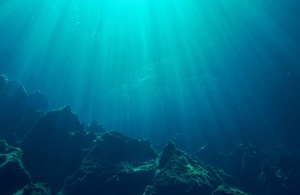Government seeks views on Highly Protected Marine Areas (HPMAs)
News story
The Government has today (6 July 2022) launched a consultation to gather views and evidence on five candidate sites for pilot Highly Protected Marine Areas (HPMAs).

Defra is consulting on five candidate pilot Highly Protected Marine Areas which are geographically spread around English waters.
Highly Protected Marine Areas (HPMAs) will have the highest levels of protection in our seas. They will conserve all species and habitats within the HPMA boundary, enabling nature to fully recover.
This is the latest step in the Government’s progress towards our ambitious ocean commitments and builds on the existing Marine Protected Area (MPA) network extending across 40% of English seas.
To enable the ecosystem to recover to as natural a state as possible, activities such as fishing, dredging, construction and anchoring are set to be prohibited in HPMA sites.
Environment Minister Rebecca Pow said:
Highly protected marine areas will offer the highest levels of protection in our seas. They will help a wide range of valuable habitats and species to fully recover, boosting the resilience of our ecosystem and allowing the marine environment to thrive.
As demands on our oceans increase, it is more important than ever that we take decisive action to safeguard nature whilst ensuring we can continue to meet the sustainable needs of those who rely on our seas.
Defra is consulting on five candidate pilot HPMAs which are geographically spread around English waters and cover inshore and offshore habitats. These are:
-
Two inshore sites: Allonby Bay (Irish Sea) and Lindisfarne (Northern North Sea).
-
Three offshore sites: North East of Farnes Deep (Northern North Sea), Inner Silver Pit South (Southern North Sea) and Dolphin Head (Eastern Channel).
The five candidate pilot sites are a mixture of natural and degraded sites and include a wide range of biodiversity such as sheltered intertidal mudflats, subtidal kelp forests, and biogenic and rocky reef. They are also home to valuable marine species, commercially important fish stocks, and include blue carbon habitats which play an important role in capturing and storing carbon. The candidate sites were selected using ecological analysis and advice from Natural England and the Joint Nature Conservation Committee (JNCC).
Chair of Natural England, Tony Juniper, said:
By supporting the full recovery of vital marine ecosystems, Highly Protected Marine Areas will be a critical mechanism to reverse the damage imposed on our ocean and safeguard it for future generations.
The five candidate sites outlined today present the chance to protect some of our most vulnerable marine wildlife, and I welcome this consultation as we take the next step forward in securing the long-term sustainability of our ocean.
The consultation will run for 12 weeks from today, 6 July 2022. The evidence gathered will inform which candidate sites are taken forward as pilot HPMAs. The first HPMAs will be designated in 2023.
Published 6 July 2022